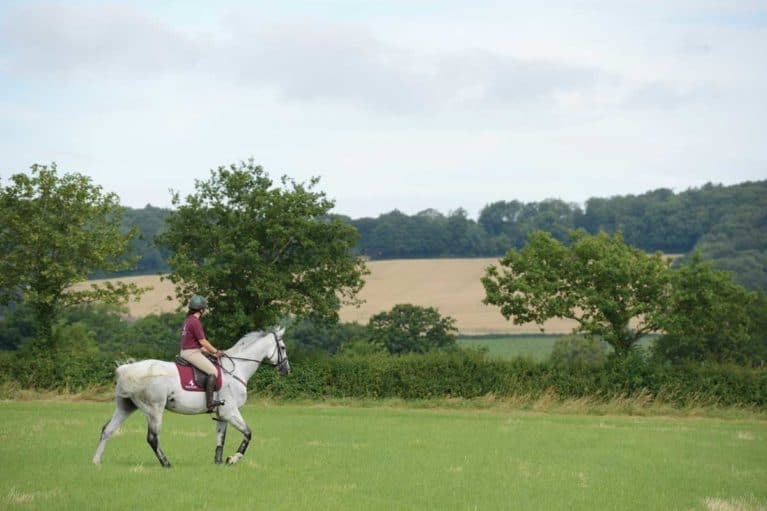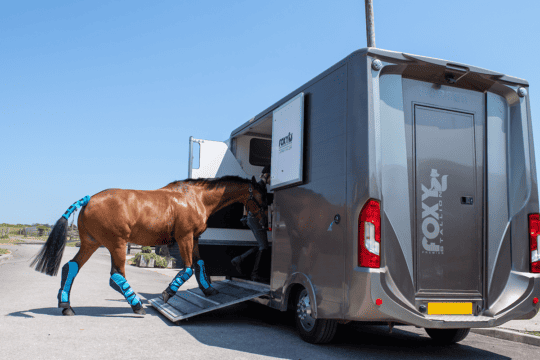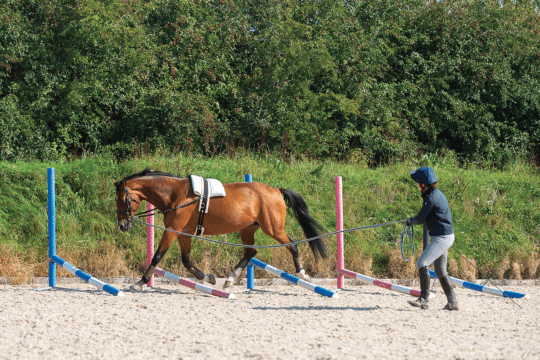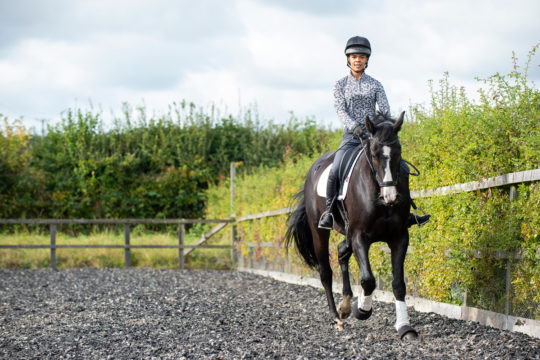Where to begin with your ex-racehorse
Posted in Riding Schooling and Training Groundwork and Handling
So, you’ve got your new ex-racehorse, but where to start? Clare Poole, top ex-racehorse showing producer, rider and judge, explains

Buying horses off the track and retraining them for a new career is becoming increasingly common. And thanks to the Retraining of Racehorses charity, competing them is becoming much more accessible. Popular new careers include, but are by no means limited to, showing, eventing and dressage. Retrained racehorses are also excelling in disciplines you might not expect, such as polo.
Ex-racehorses can begin new careers at any age. Some will have raced many times over a long career spanning a number of years and others may have only raced once or even not at all, despite being in training – every horse is different. In this three-part series, I’ll explain how to get started with your ex-racehorse, and the best ways to introduce flatwork and jumping, which you can apply to non-racers doing something new, too.
Change of pace
Life as a racehorse is a strict regime of daily training, little variety and limited turnout. It’s important to understand that when a horse starts his new life and career outside this racing bubble, although it initially seems like a more relaxing experience, such a change can be a bit overwhelming for him.
When he arrives, put him out for a few days and allow him to get used to being in all the different situations on your yard, because it’ll be completely different to what he’s used to. While he’s settling in, it gives you time to give him a full MOT so that he’s got the best chance of success when you start work. Here’s a checklist of things to work through…
- ask your vet to give him a health check – this is a good time to discuss any injuries your horse has received in his racing career and how best to proceed
- assess his condition – consider when he last raced and whether he’s had time off for an injury, as this will have an effect on his condition. Bearing this in mind will help you start thinking about feeding and working him
- get his teeth checked – many horses leave racing with poor teeth, which are often very sharp. Before you start working him, get him seen by your vet or equine dental technician
- review his diet – his digestive system is used to being full of concentrate and much less forage than is ideal. You don’t need to stop feeding him, but keep it simple and feed him according to his condition and temperament. Speak to a nutritionist for advice if you’re unsure
- check his tack – as with any horse, you might need to experiment with different bits to see what suits him best, but avoid over-complicating things and restricting him with unnecessary tack. It’s also a good idea to get a qualified saddle fitter to check his saddle, especially as he’s likely to change shape quite a lot in the first few months
Top tip – It’s important to keep to a routine when it comes to feeding and turnout, but try to keep his work as varied as possible.
Most horses need two or three weeks of quiet time, but once he’s settled in, you can get started. Remember that your horse was used to training six days a week, so unless he’s injured, it’s not good to stop altogether – you need to keep his brain ticking over and muscles working, just not in the way he’s used to. In this time, it’s good to watch him move. Ask a friend to lead him around for you and allow him to be loose in your arena.
There’s no single best time to start introducing ridden work because it all depends on whether he had any down time or injuries before he came to you, or come straight off the track. Some horses need a little more time spent on groundwork and lungeing because they need to improve their condition before they begin doing more ridden work. Once they’ve been away from racing for a bit, they tend to have a sense of ‘Okay, I’m ready’.
Mounting made easy
You’ve probably seen jockeys mounting on the TV – they tend to get a leg up while their horse is walking. There’s no stopping and waiting by a mounting block like you’re probably used to, so this is one of the first lessons you need to teach him.
- Ask a friend to walk alongside your horse as you approach the mounting block.
- Ask your friend to hold him while you prepare to mount.
- Mount and sit down gently. Take up your reins slowly and ask your handler to hold him still for a few seconds. Praise him when he stands.
- Ask him to walk on, halt, then dismount. Practise this a few times and he’ll soon get used to standing and waiting when you mount.
And you’re off
To begin with, it’s all about getting to know your horse, rather than thinking about flatwork (that comes next month in part two). It’s useful to try him on the lunge first before you ride him, although some horses just don’t understand it because they haven’t done it before, so it might take a little time and patience. Lungeing is great for encouraging your horse to stretch down over his back and will help him get used to listening to your voice commands. It’s also a really good opportunity to watch your horse, and see how he moves and responds before you get on.
When you’re on, ride lots of wide turns and big shapes. Avoid making any really tight turns or asking him to do too much. Focus on encouraging him to go in a consistent rhythm – this is more important than anything else. You’ll find in most cases that the muscles underneath his neck are far more developed than those across the top. This takes a while to change, but start by encouraging him to stretch his neck down. You don’t need to ask him to work in any sort of outline at this stage.
Ride lots of transitions between halt, walk and trot, and when you halt, ask him to stand and wait for a few seconds before you move on again. Think about his natural head carriage – many naturally have quite a high head carriage, but some can be downhill and quite snatchy.
Even if he was racing fit when he came to you, he’s likely to tire quite quickly because he’ll be doing different work to what he’s used to. It’s like when you’re backing a young horse – he’ll tire mentally quickly, too. Keep it varied, working little and often. Introduce a bit of hacking and work on the lunge once a week, too.
Did you know?
Most races in the UK are run anti-clockwise and most racehorses have a preferred direction, so are raced more at courses running in this direction. This is similar to working your horse predominantly on one rein because he finds it easier and, as a result, you’ll find your ex-racer tends to hang to one side. Although your aim is to maintain a consistent contact, if your horse hangs to one side, give away your other hand every so often so he learns to hold himself up.















